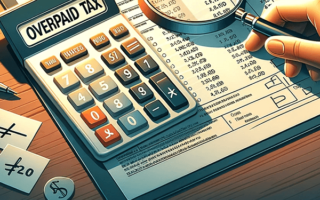Calculating your taxable income and tax liability for your business may seem daunting, but with proper record-keeping and understanding of the process, it can be manageable. By keeping track of your income and expenses throughout the year, you can accurately determine your net taxable income. This information can then be used to calculate your tax liability. In this article, we will provide a step-by-step guide to help you navigate this process effectively.
Keep Records of Payments
It is crucial to keep records of all the payments you receive for your business throughout the year. By doing so, you can avoid losing track of your income. If you have earned more than $600 from a client, you will receive a 1099-MISC form, which is the self-employment equivalent of a W2, at the beginning of the following year. However, even if your total payments from a client fall between $50 and $600, they are still taxable, even if you do not receive a 1099 form.
Keep Records of Expenses Too
In addition to keeping track of your income, it is equally important to maintain records of your business expenses. This includes receipts and credit card statements for office supplies, equipment repairs, and other relevant expenses. Relying solely on memory can lead to forgetting crucial expenses. It is advisable to organize and record your expenses on a monthly basis to avoid the stress of sorting through piles of paperwork when tax season arrives.
Calculate Your Gross Income
To calculate your gross income, begin by entering the total payments you received in the first section of Schedule C, the form commonly used by business owners. Next, subtract any returns or allowances on goods you sold, followed by the cost of goods sold. This category encompasses the price of raw materials or finished products, storage costs, labor expenses, and other relevant costs. Finally, add any additional business income, such as tax credits or refunds you received.
Subtract Your Expenses
Section II of Schedule C is where you report your expenses. This includes car expenses, office supplies, business travel, legal advice, employee wages, and more. The IRS instructions for Schedule C provide detailed information on what expenses can be included in each category. If you use your home for business purposes, you can also deduct a percentage of your home expenses. For example, if your home office occupies 8 percent of your floor space, you can claim 8 percent of your utilities as a write-off. By completing this section, you will determine your taxable business income.
Calculate Self-Employment Tax
Schedule SE is used to calculate whether you owe any self-employment tax. This tax replaces the Social Security and Medicare taxes that would typically be collected from your paycheck by an employer. You can deduct 50 percent of this tax on your 1040 form.
Calculate Your Liability
To calculate your tax liability, report your taxable business income on your 1040 form. Add this amount to any other taxable income you may have, such as wages from a day job or your spouse’s income if filing jointly. Follow the instructions provided on the 1040 form to determine your liability. Whether you earn money from self-employment or a traditional job, the process remains the same.
By following these steps and utilizing the resources provided by the IRS, you can confidently calculate your taxable income and tax liability for your business. Remember to keep accurate records, stay organized, and consult with a tax professional if needed. Understanding this process will empower you to effectively manage your business taxes and ensure compliance with the IRS.


